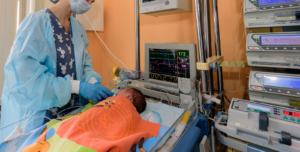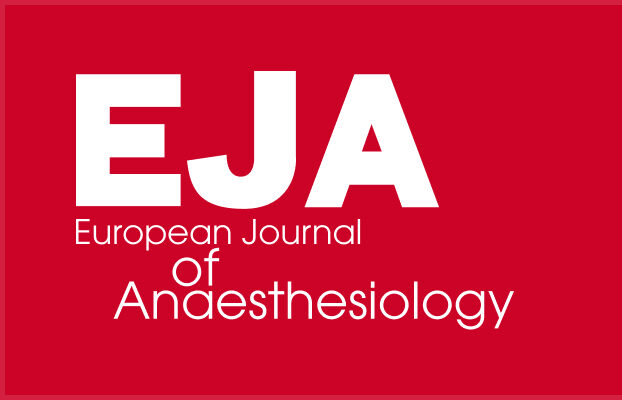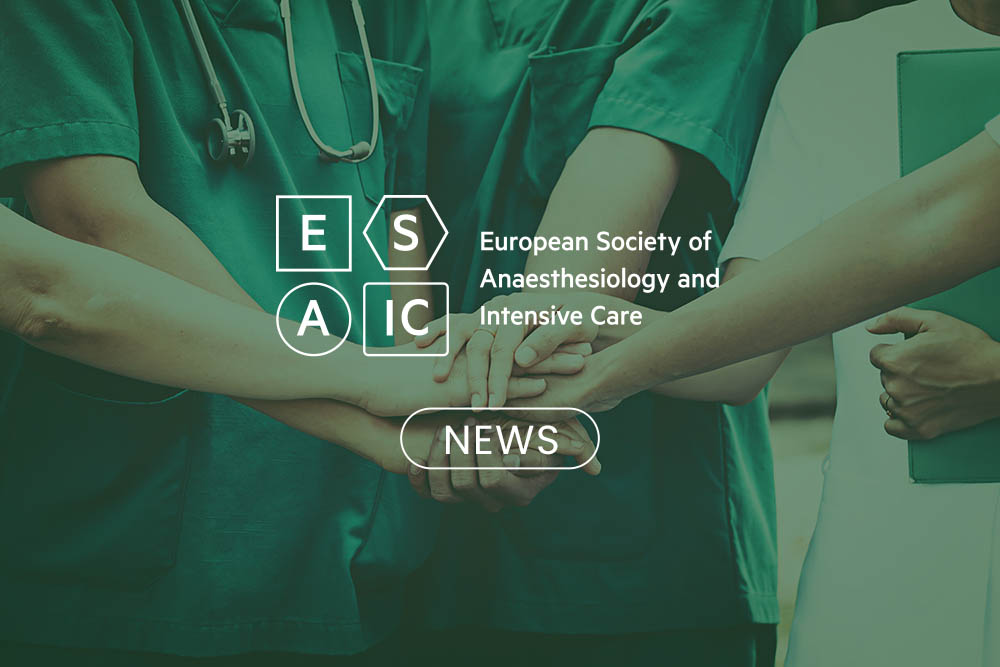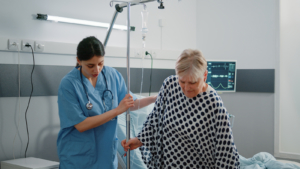Congress Newsletter 2022
Pro-con debate preview – should families be present during paediatric resuscitation?
Session 10D1, today Sunday 5 May, 1400-1500H, Room Red 1
The intense moments surrounding resuscitating a child are incredibly difficult for all concerned. In this pro-con debate during Sunday afternoon’s Euroanaesthesia programme, two experts take opposing views about whether families should be present during this critical situation.

Families should be allowed to be present, says Dr Karin Becke-Jakob, Anesthesia and Intensive Care, Cnopf Children’s Hospital – Hospital Hallerwiese, Nuremberg, Germany.
She says: “Should family members be offered the opportunity to be present during resuscitation? This is an important question, especially considering that the once paternalistic organised health care system has changed a lot in recent years and the presence of parents in the context of medical care of their child is not only tolerated but actively encouraged.”
Dr Becke-Jakob says that the recent literature regarding family presence during resuscitation (FPDR) contains a number of key arguments in favour of family presence1:
- There is no clinical evidence for a negative impact on patients’ outcome
- The majority of parents have a strong wish to be present during the resuscitation of their children
- Many health care providers approve of family presence during a resuscitation although they report hypothetical concerns
- FPDR may improve the psychological outcomes of family members
On this basis, the European Resuscitation Council Guidelines 20212 again recommended FPDR: “Teams should offer family members the option to be present during resuscitation in situations where it is safe, and when the family can be adequately supported.”
Dr Becke-Jakob concludes: “As a resuscitation situation is an extremely complex situation for all parties involved, it is essential that some framework conditions are established in advance to create the best possible setting. Policy and training of specific teamwork skills are major issues to equip health care providers in order to increase situational safety and professionalism. A family support person and postinterventional psychological support of the families are another essential components of an FPDR concept and must be guaranteed to avoid negative emotional consequences.”
Arguing against FPDR during this debate will be Tom G. Hansen, Senior Consultant Paediatric Anaesthesiologist and Professor, Akershus University Hospital, Oslo, and Norway Department of Anaesthesiology & Intensive Care at the University in Oslo. He is a founding member of the Scandinavian training programme in paediatric anaesthesia and intensive care and a Deputy Editor-in-chief of the European Journal of Anaesthesiology, member of the editorial board of Acta Anaesthesiologica Scandinavica and of Pediatric Anesthesia.
He explains: “The FPDR movement has focused on the potential benefits to the family but has largely ignored the wishes and safety of the patients and healthcare professionals. The evidence to support this practice is of low quality and there is no outcome-oriented evidence to inform a recommendation for such practice or policy either for or against families being present during paediatric resuscitation.”
He adds: “The FPDR approach is stressful to healthcare providers, may negatively affect CPR performance, and may increase the risk of legal litigation. This is an important fact given that the number of patient complaints is on the rise these years. Furthermore, it may limit open communication and teaching.”
He concludes: “The resuscitation room should be considered ‘a sterile cockpit’ with no room for non-essential people.”
References for Dr Becke-Jakob:
- Dainty KN, et al; International Liaison Committee on Resuscitation’s (ILCOR) Pediatric; Neonatal Life Support Task Force; Education, Implementation and Teams Task Force. Family presence during resuscitation in paediatric and neonatal cardiac arrest: A systematic review. Resuscitation. 2021; 162:20-34.
- Mentzelopoulos SD, et al. European Resuscitation Council Guidelines 2021: Ethics of resuscitation and end of life decisions. Resuscitation. 2021; 161:408-432.
References for Prof Hansen:
- Dainty KN et al. Family presence during resuscitation in paediatric and neonatal cardiac arrest: A systematic review Resuscitation 2021; 162; 20-34
- Wyckoff MH et al. 2021 International Consensus on Cardiopulmonary Resuscitation and Emergency Cardiovascular Care Science With Treatment Recommendations: Summary From the Basic Life Support; Advanced Life Support; Neonatal Life Support; Education, Implementation, and Teams; First Aid Task Forces; and the COVID-19 Working Group. Circulation 2022; 145; e645-e721
Read More of our special newsletter covering our congress.










